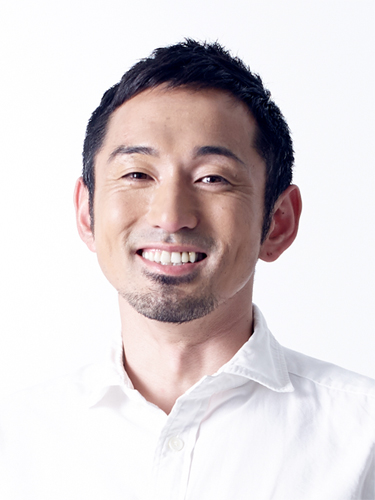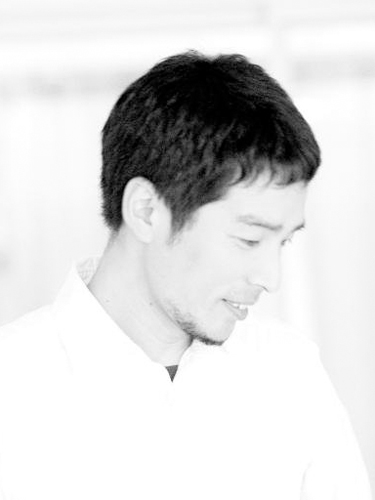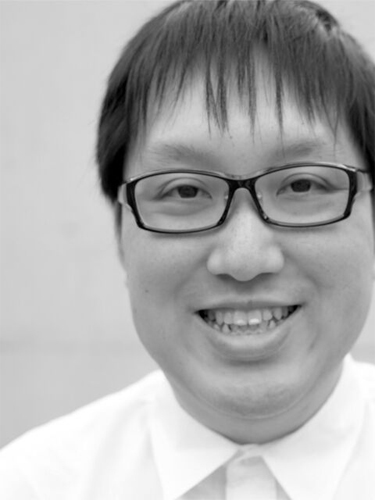contents
Director
For me, being an athlete meant performing actions in their ultimate form. While some actions are unprompted, athletes also take actions to respond to their environment, such as adjusting to the actions of their competitors, and accommodating factors like the wind and the surface of the ground.
The actions of athletes are extensions of actions that we take unconsciously in our everyday lives: a foot extended to take a step, a hand grasping a cup, eyes gazing absently at a browser. By taking such actions to their ultimate, mastered form, the senses become heightened, and we come to know a part of ourselves that we did not know existed. The world of athletes is not wholly different from the world of non-athletes, but it is one where one notices things in detail that is a little bit finer.
Everyone possesses athleticism, but realizing it takes time and effort. Through this exhibition, we hope to offer a glimpse of what that is like.
Dai Tamesue

Dai Tamesue
Born in 1978, Hiroshima Prefecture. First Japanese competitor to earn a medal in sprinting in the Track & Field category of a worldwide sports competition. He holds the men's 400 meter hurdling record in Japan (as of January 2017). In the 2001 Edmonton World Championships and 2005 Helsinki World Championships, Tamasue earned bronze medals. He has also competed in three Olympic Games: Sydney, Athens, and Beijing. At present, he runs his own company, called Samurai. Through his company as well as his work with the Athlete Society, the company Xiborg, and others, he's involved in a wide range of sports, social, educational, and research activities.
When we think of athletes, we tend to focus on their well-honed, almost superhuman physical strength. Yet that is only one aspect of what makes an athlete.
Athletes are sensitive to and can perceive changes that occur in their environment from moment to moment: the ground, air, water, the way a ball or their opponents move, etc. At the same time, they know their own bodies well, are able to control them, and respond instantaneously to those changes. To perform at their best in the extreme conditions of decisive moments, athletes extend their own potential - and sometimes even human potential - to its ultimate limits. We want visitors to the exhibition to experience the sensory aspect of athleticism, namely how athletes feel and understand their own bodies and the environment around them, and make them adapt to one another.
Taking another look at the relationship between the body and the environment and the ways in which they interacted with each other will surely provide insight into the nature of the actions that we collectively call "design."
Hisato Ogata

Hisato Ogata
With a B.E. from the Department of Mechanical Engineering at the University of Tokyo, he joined Takram in 2012, following post-graduate studies at the International Academy of Media Arts and Sciences (IAMAS) and employment with LEADING EDGE DESIGN corp. His work is multidisciplinary, spanning everything from hardware/software to design, engineering, art and science. Some of the major awards Ogata has received are: a 2004 Good Design Award, a 2005 iF Product Design Award (Germany), a Jury Selection Prize at the 2012 Japan Media Arts Festival, and a 2015 Good Design Special Award. He has participated as a participating creator in the exhibitions "bones", "The Definition of Self", and "Design Ah!" held at 21_21 DESIGN SIGHT.
There are some realms of human experience that one first sees through knowing something. There are others that are only seen by developing the ability to do something. Whenever we study something or learn a skill, little by little we become able to see these new realms of experience with greater precision or from a different perspective than before.
If this is the case, what are the realms of experience that only athletes, who have mastered the skill of controlling their own bodies and minds, can see? We non-athletes have minds and bodies as well, so how are those realms different from the ones we perceive?
In this exhibition, we hope that, through the works on exhibit, visitors gain a sense for the various elements that make an athlete, including physical and mental control. By gaining rare insight into how things are experienced by an athlete, we hope that visitors can discover something they didn't previously know about their own bodies and minds.
Syunichi Suge

Syunichi Suge
Born in 1980, he completed his post-graduate studies at the Graduate School of Media and Governance, Keio University. His main focus is to research and develop new modes of expression based on human senses and make proposals to society using various media. His better-known works include "2355/0655" on NHK Educational TV, "Behavioral Economics Manga: HENTECONOMICS" serialized in the BRUTUS magazine, and concept research for the exhibition "Measuring: This much, That much, How much?" at 21_21 DESIGN SIGHT," as well as his books Sabun ('Difference'; co-author, Bijutsu Shuppan-Sha Co., Ltd.) and Manazashi ('Gaze'; Voyager Japan, Inc.). A winner of the D&AD Yellow Pencil Award, among others, he is currently a lecturer at Tama Art University.

